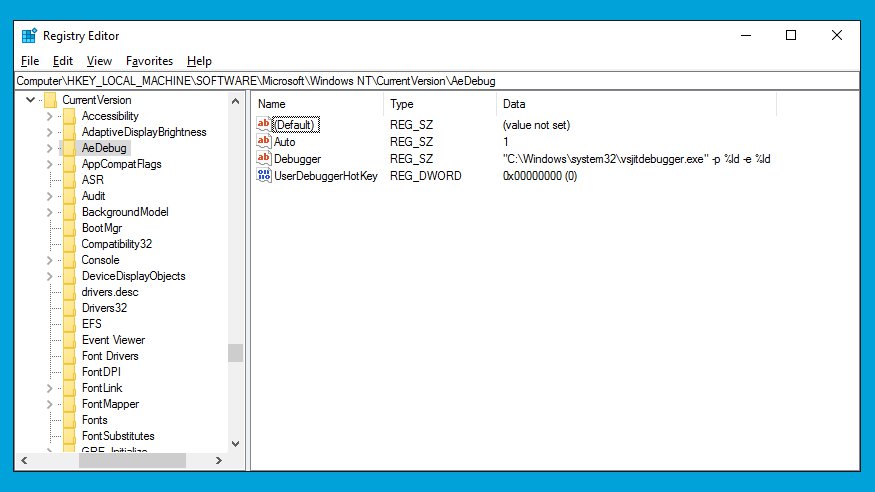5 ways to turn on Registry Editor in Windows 10: Step 1.: Click the Start button on the bottom-left corner, type regedit in. Step 2.: Select Yes in the User Account Control dialog. Step 1.: Right-tap the lower-left corner and choose Run in the Quick Access Menu. Step 2.: Type regedit. How to open the Registry Editor in Windows? This solution works for Windows 10, Windows 8.1/8, Windows 7, Windows Vista, Windows XP Press Windows-Key + R; Type the following command regedit Press OK; Windows Registry Editor opens Solution 2. Right-click the Windows-Button on the left Click run; Type the command regedit Press OK.
Step 1: Type Regedit in Start menu or taskbar search box and then press Enter key. Click Yes button when you see the User Account Control dialog. Step 2: In the Registry Editor, navigate to the following key: Step 3: Right-click on Windows key (as shown in the below picture), click New, and then click Key.
When Windows 10 installed on your computer, it stored its product key in the registry. But this could leave it vulnerable to being stolen from disclosure attacks by malicious software. Remove the product key from the registry will prevent your product key from being stolen. Before you do this action, it's imperative to back up your product key in a secure location, in case you forgot or lost it. This article will show you how to do.
How to Find Product Key using Notepad in Windows 10
To view the Windows Product Key, you can use a Visual Basic (VB) script that retrieves the key from the registry. The following steps will show you how to create such a script.
Step 1: Create a new Text Document on your computer.
Right-click on the blank area in Desktop or File Explorer, select New > Text Document.
Step 2: Then copy and paste in the following bit of code into a Notepad.
Set WshShell = CreateObject('WScript.Shell')
MsgBox ConvertToKey(WshShell.RegRead('HKLMSOFTWAREMicrosoftWindows NTCurrentVersionDigitalProductId'))
Function ConvertToKey(Key)
Const KeyOffset = 52
i = 28
Chars = 'BCDFGHJKMPQRTVWXY2346789'
Do
Cur = 0
x = 14
Do
Cur = Cur * 256
Cur = Key(x + KeyOffset) + Cur
Key(x + KeyOffset) = (Cur 24) And 255
Cur = Cur Mod 24
x = x -1
Loop While x >= 0
i = i -1
KeyOutput = Mid(Chars, Cur + 1, 1) & KeyOutput
If (((29 - i) Mod 6) = 0) And (i <> -1) Then
i = i -1
KeyOutput = '-' & KeyOutput
End If
Loop While i >= 0
ConvertToKey = KeyOutput
End Function
Step 3: Now save the file using the extension .vbs (instead of .txt).
Regedit Exe Windows 10 Download
Step 4: To run the script, double-click on the .vbs file. You’ll see a popup window with your product key. Hit CTRL + C if you’d like to copy the key.
How to Remove Windows 10 Product Key from Registry
To remove the product key from the registry to prevent it from being stolen. Here's how:
Step 1: Open Command Prompt as administrator.
To do: Press Win+X, A in the keyboard. Command Prompt (Admin) window will pop up.
Step 2: In command prompt window, input the removing product key: slmgr /cpky command, and then press Enter.

Step 3: When it prompts that Product key has been cleared successfully. Click on OK.
Step 4: Even if the product key is cleared, you can still view the partial product key.
Regedit Windows 10 Wallpaper
To do: Execute command:slmgr /dli

Look how it displays the partial product key, this information is enough to identify which product key was used for this installation. If you lost the product key, you can recover the product key easily via the Product Key Finder.
Regedit Windows 10 Autologon
Related Articles
- Change or Remove Windows 10 Password without any Software
- 4 Ways to Change Product Key in Windows 10
- How to Find Product Key for Windows 10